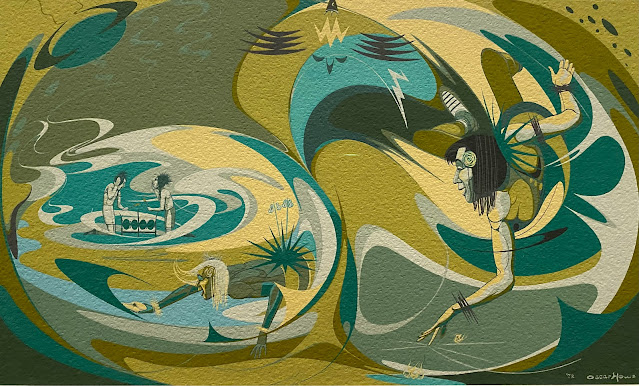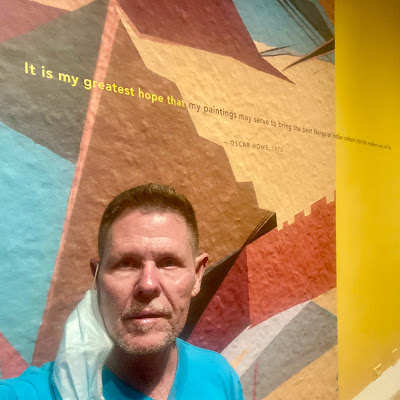Thom and I met at the National Museum of the American Indian in Bowling Green for a long walk north along the East River. Few places in New York City are as grand as the museum's lobby in the former Alexander Hamilton U. S. Custom House. Reginald Marsh painted the murals that line the rotunda. They depict the history of shipping in the ports of New York and New Jersey.
When it comes to art appreciation, I take my marching orders from The New Yorker's Peter Schjeldahl. Dakota Modern: The Art of Oscar Howe reminded me yet again how many talented men and women have painted in near obscurity, and how our relatively recent emphasis on the importance of representation has begun to change that, often posthumously.
 |
“Sioux Water Boy” (1939) |
Howe ended up fulfilling commissions for the Works Progress Administration and teaching art at the University of South Dakota. Although he died in 1983 his brightly colored paintings look remarkably contemporary.
 |
| "Day Figure of the Buffalo Dance" (1964) |
 |
| "Ghost Dance" (1960) |
 |
"Courting" (1970) |
Like Dali, Howe painted Jesus from a different perspective.
 |
"Indian Christ" (1972) |
It's a sad commentary on our nation's racist history that Native Americans fleeing massacres bring to mind hamsters going round and round on wheels in their cages.
 |
| "Fleeing A Massacre" (1969) |
 |
| "Ceremonial Dancer" (1968) |
 |
| "Cunka Wakan (Dakota Horse)" (1966) |
It is my greatest hope that my paintings may serve to bring the best things of Indian culture into the modern way of life. Oscar Howe, 1970




No comments:
Post a Comment